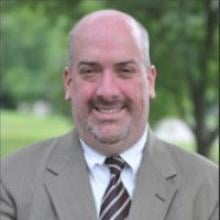The 2012 State of Configuration Management Address

Each year, the president of the United States gives a State of the Union address. I thought I’d do a similar address, except my theme will cover the state of configuration management.
To all of you configuration managers, developers, testers, and information technology workers, the state of CM is not good. We are in a condition of disarray, and we are crumbling under the weight of our inability to agree.
To prove my point, I will cite a few examples from LinkedIn, CM Crossroads, and other sources showing this discord and how I feel it is weakening our future.
We cannot agree on the simplest of terms like configurable items. We are creating internal conflicts and wars because we are unwilling to change our viewpoints on SCM and CM. We resort to verbal attacks when someone disagrees or does not share our way of thinking. We are embracing technologies that are first generation (Subversion and Git) when we should be moving forward with fourth- and fifth-generation tools like Rational Team Concert and Serena’s Orchestrated Solutions.
While it is easy for me to say things are going wrong and that we are not moving in a positive direction, there is some hope. I have created a CM Manifesto as a first step in getting CM folks to come to the table and discuss our issues.
Additionally, I have put forth a discussion on certifications that we can use to strengthen our field and knowledge. I think we should look to the past for guidance and clarity but not let the past get in the way of progress.
We need to realize that the future of CM—which consists of hardware, software, documentation, and content management—should be embraced as a way to expand the CM field and not to be seen as a dilution of strong CM practices.
We need to realize that application lifecycle management is a necessary and evolutionary change in our field—not a hindrance or something to fear.
I call upon the experts in this field—Brad Appleton, Bob Aiello, Steve Berczuk, Mark Bools, Robert Cowham, and many others—to step up to the plate and push for unity and a way forward. These thought leaders with many years of experience should come together. I will arrange and coordinate this meeting so we can move CM in a more positive direction.
None of this will be easy. We as CM professionals must come together for the greater good of CM. We must strive for understanding even though our opinions differ. Finally, we must fight for CM’s proper place in IT so that in next year’s “state of CM address,” I can say that the state of CM is strong.

